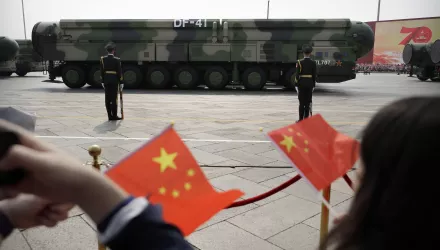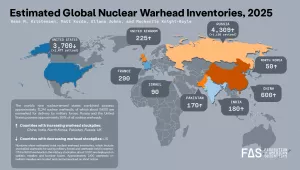Executive Summary
At the first nuclear security summit in April 2010, the assembled leaders agreed on the goal of securing all vulnerable nuclear material worldwide within four years, including consolidating plutonium and highly enriched uranium (HEU) to fewer locations and minimizing the use of HEU “where technically and economically feasible.” Reducing the number of buildings and sites where nuclear weapons and weapons-usable nuclear material exist is a key element of preventing nuclear theft and nuclear terrorism, as the only way to completely eliminate the risk that nuclear material will be stolen from a particular location is to remove the material itself. States can achieve more effective nuclear security at lower cost if they have fewer places with nuclear weapons or weapons-usable nuclear material to protect.
The fundamental goal must be to reduce the number of sites and transports as far and as quickly as possible, and provide highly effective security for those that remain. Over time, the civil use of HEU should be phased out, and HEU should be eliminated from all civil sites. This paper outlines the efforts the international community is already making to meet these objectives, and recommends a range of next steps. Today, nuclear weapons or their essential ingredients exist in hundreds of buildings and bunkers in dozens of countries, with widely varying levels of security. Fortunately, an array of national and international efforts to move nuclear weapons and weapons-usable nuclear material to fewer locations have been underway for years, and have made major progress. Since the end of the Cold War, nuclear weapons have been removed from many countries and scores of nuclear weapon sites have been eliminated. Twenty countries have eliminated all the weapons-usable nuclear material on their soil – six of them since President Obama called for a four-year effort to secure nuclear materials in April 2009. All weapons-usable nuclear material has been removed from dozens of other sites around the world. Some 180 research reactors that once used HEU fuel have either shut down or converted to using low-enriched uranium that cannot be used in a nuclear bomb. The world is more secure as a result.
But there is much more to be done. There are stocks of material and types of facilities that are not yet targeted for consolidation, and a range of political, bureaucratic, technical, and financial barriers to be overcome. There are potentially effective policy tools that have not yet been fully utilized. This paper (a) discusses how to set priorities among different stocks to be consolidated; (b) describes the scope and progress of existing consolidation efforts; and (c) suggests steps to complement and extend the existing programs. Our discussion of the next steps for consolidation will fall into two categories: covering additional stocks and facilities that are not yet effectively addressed, and using additional policy approaches to strengthen the effort.
Harrell, Eben and Matthew Bunn. “Consolidation: Thwarting Nuclear Theft.” Managing the Atom Project, Belfer Center, March 2012







